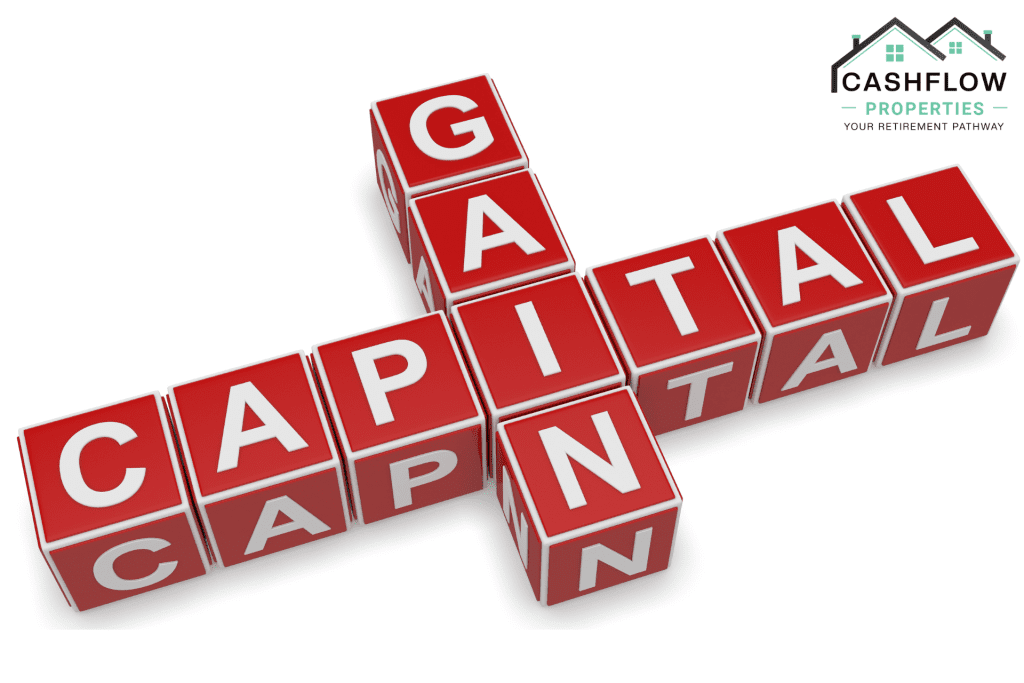
Cruising smoothly through the real estate investment journey can often feel like a balancing act between maximizing profits and minimizing taxes. For property investors, one of the most critical tax considerations is Capital Gains Tax (CGT)—a hidden cost that can dramatically impact the returns on your investments. Whether you’re a seasoned investor or just dipping your toes into the market, understanding CGT and the strategies to reduce or even avoid it could be the difference between building sustainable wealth and seeing your hard-earned gains taxed away. In this blog, we’ll unravel the complexities of CGT and show you how to make it work in your favor.
What is Capital Gains Tax?
Capital Gains Tax (CGT) is a tax levied on the profit made when you sell an asset, such as a property, for more than its purchase price. The gain is added to your taxable income in the year of sale and taxed according to your marginal tax rate. While it is not a standalone tax, CGT can substantially reduce the profit you make on an investment, making it a critical consideration for property investors.
In the context of real estate, CGT is primarily relevant to investment properties and second homes, rather than your primary residence. For example, if you bought a property in 2010 for AUD 600,000 and sold it in 2024 for AUD 1,000,000, your capital gain would be AUD 400,000. The CGT you owe depends on factors like how long you’ve held the property and whether you qualify for any discounts.
How Does CGT Work?
CGT is triggered when you sell a property for a profit, and the amount owed is based on the gain you make. The gain is calculated as the difference between the purchase price (plus any allowable expenses like stamp duty and legal fees) and the sale price.
If you’ve held the property for more than 12 months, you’re eligible for a 50% CGT discount, meaning only half of the gain is taxed. For example, if you make a capital gain of AUD 400,000 and qualify for the discount, only AUD 200,000 will be added to your taxable income.
CGT and Primary Residence Exemption
One of the most significant advantages available to homeowners in Australia is the Primary Residence Exemption. If the property you are selling was your main residence, you might be exempt from paying CGT altogether. However, if you’ve used the property to generate rental income at any point, things get more complicated.
The 6-Year Rule: Maximizing Your Primary Residence Exemption

If you’ve moved out of your primary residence and turned it into a rental property, you don’t immediately lose your CGT exemption. The 6-year rule allows you to treat the property as your primary residence for up to six years after you move out, as long as you don’t treat another property as your primary residence during that time.
This rule is a valuable tool for investors who want to rent out their home temporarily without losing their CGT exemption.
Example:
Suppose you bought a house in 2015 and lived in it until 2020 before moving out and renting it. If you sell the house in 2026, you could still be exempt from CGT under the 6-year rule, provided you haven’t declared another property as your primary residence.
Resetting the 6-Year Rule
After the 6-year period is over, your property will be subject to CGT when sold, but there is a way to reset the clock on this exemption. You can move back into the property and re-establish it as your main residence. Once you’ve lived in the property again, you can potentially start a new 6-year period of exemption.
This strategy can be particularly useful for investors who want to hold onto their properties for the long term but take advantage of CGT exemptions.
Example:
After renting out your primary residence for five years, you move back in for 12 months. This allows you to re-establish the property as your primary residence and start another 6-year period during which you can rent it out and still qualify for the CGT exemption.
What Happens After 6 Years?
If you continue to rent out your former primary residence beyond six years without moving back in, you will eventually trigger CGT liability when you sell the property. The CGT will be calculated based on the proportion of time the property was rented out versus the time it was your primary residence.
Example:
You lived in your property for five years, rented it out for seven years, and then sold it. The property was rented for seven out of the 12 years you owned it, so 58% of the capital gain will be subject to CGT.
Managing CGT When You Own Multiple Properties
Owning multiple properties can complicate your CGT calculations. If you have more than one property, you can only claim the primary residence exemption on one property at a time. Therefore, it’s important to be strategic about which property you declare as your primary residence, particularly if you are moving between properties or renting out one of them.
CGT on Multiple Properties Example:
If you own both an investment property and a holiday home, you’ll need to decide which one to declare as your primary residence. You can claim the CGT exemption on only one property at a time, so consider which property is more likely to appreciate in value or which you plan to sell in the near future.
How to Avoid or Minimize CGT
While CGT is a reality for many investors, there are strategies to minimize or even avoid it:
1. Hold the Property for More than 12 Months
This qualifies you for the 50% CGT discount, reducing the taxable portion of your capital gain by half.
2. Maximize the Primary Residence Exemption
If you’re planning to sell a property that has been both your home and an investment, be mindful of how long it was used for each purpose. The longer it’s your primary residence, the greater your exemption.
3. Use the 6-Year Rule
Rent out your home for up to six years while still benefiting from the CGT exemption. If needed, move back in to reset the exemption period.
4. Offset Capital Gains with Losses
If you’ve made a capital loss on another investment, you can use that loss to offset the capital gain from your property sale, reducing your CGT liability.
5. Hold and Leverage Equity
One of the most effective ways to avoid paying CGT is to simply not sell the property. Instead of relying on selling for profit, you can access your property’s equity to finance additional purchases.
Bharat Patel’s Buy-and-Hold Strategy: A Proven Path to Wealth
Our founder, Bharat Patel, has long advocated for a buy-and-hold strategy when it comes to property investment. His philosophy is simple: don’t sell, and you won’t trigger CGT. Instead of cashing in on a sale, Bharat focuses on building wealth by extracting equity from properties to fund further investments.
Key Benefits of the Buy-and-Hold Strategy:
• Avoid CGT: By holding onto properties long-term, you avoid the capital gains tax that would be payable upon selling.
• Leverage Equity: Over time, property values increase, allowing investors to access the growing equity in their homes. This equity can be used as a deposit for new properties, expanding your portfolio without selling.
• Increase Cash Flow: As you acquire more properties, your rental income grows, providing a steady cash flow that can fund further investments or lifestyle choices.
Bharat’s approach emphasizes patience and long-term planning. By building a portfolio of properties and holding onto them for extended periods, investors can create substantial wealth while minimizing tax liabilities.
Final Thoughts
Capital Gains Tax is an inevitable part of real estate investment, but with careful planning, its impact can be minimized. Strategies like leveraging the 6-year rule, resetting the clock on exemptions, and focusing on long-term equity growth can help investors reduce or avoid CGT altogether.
As Bharat Patel’s buy-and-hold strategy demonstrates, you don’t always need to sell to profit from property. By holding properties and using equity to expand your portfolio, you can build long-term wealth and ensure a sustainable cash flow while keeping the taxman at bay.


Thank you Bharat !
Very simple plain and short explanation on CGT.